A good chair is not just about design, colour or the wood used. It's mostly about comfort and relaxation. When we buy wooden chairs, we won't choose the ones that look great unless we're comfortable, unless we feel like we're slipping, our legs are hanging off or the edge of our seat is uncomfortable. Design is very important, but if clear rules of manufacture are not followed, the chair remains a decorative object without demonstrating its usefulness. That's why not everyone can make chairs. Few factories make both body furniture and chairs. Usually wooden chairs are made in factories where that's all they do, and other factories buy them in white and finish them together with the table and other bodies so that the whole piece of furniture has the same look. Let's see how the chairs should be made to provide the comfort we want.
General considerations
The chair has been around since ancient times, but at that time it was not considered an ordinary piece of furniture but an object that showed rank. It was the seat on which kings and emperors and high priests sat, it was the symbol of power (the throne of the kingdom). Others used to sit on chests, benches, stumps or other improvisations. From the 16th century, chairs began to become common furniture items, but not everyone could afford them. They were no longer the preserve of kings but could be found in the homes of the privileged classes, and were decorated and adorned according to styles of the time. Simpler variants could be found in inns, taverns or other meeting places.
The style of chairs has spanned various periods, reflecting the opulence or austerity of the times just like other pieces of furniture. In addition to the appearance and decorative elements, sizes have changed over time. Because they have always been in line with people's average sizes, which have also changed over time. 200-300 years ago people were not so tall, but they were more robust, more windy, and you can see this in the chairs of those times. They were shorter, but with wider seats and backs. The legs, even though they were delicately shaped (cabriole) or finished with specific decorations (ball caught in claws, lion paws) were strong and sturdy enough to support the weight.
Now, the seats are designed so that a person of 1.78 m (considered average height) can sit comfortably. Of course, this is a chair for an adult. When it comes to children, the chair sizes are different for different age groups (more on this below). But let's see what it means to sit comfortably in a chair.
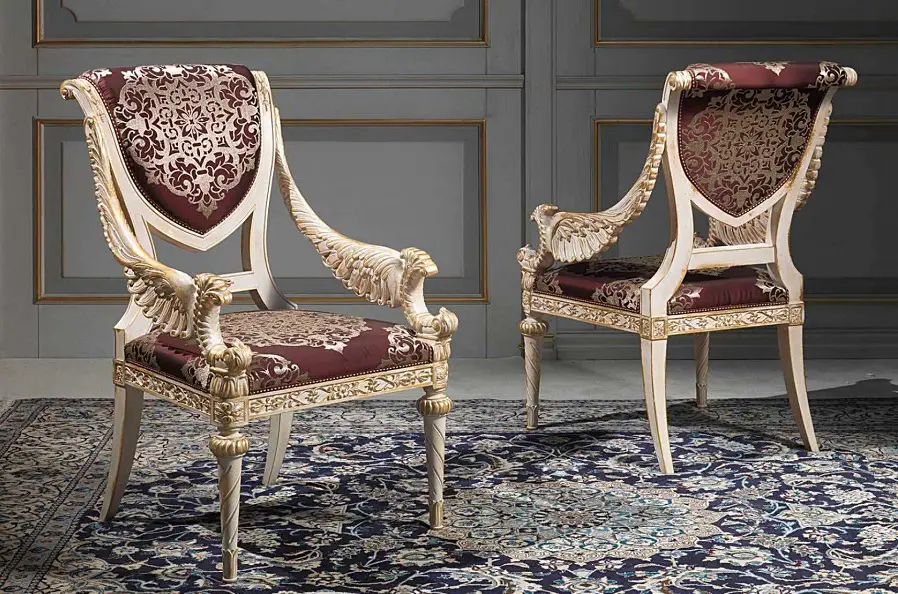
photo source: archiexpo.fr
What it means to be comfortable
First we should define what comfortable means. Because we don't all mean the same thing by 'comfortable' and we need to find a middle line that satisfies everyone. And the general wishes are:
- to sit down and get up without difficulty
- the soles of the feet should rest naturally on the floor and the knees should not be pushed up but should form an angle of 90-100º in as normal a position as possible
- to sit comfortably and securely on the seat, without feeling slippery
- the seat should not be very deep so that its edge pushes into the calf. This forces us to come to the edge which leads to an uncomfortable position.
- the seat should not be very narrow because it becomes unstable and induces a feeling of insecurity
- the backrest should be slightly tilted backwards from vertical to avoid imposing a rigid posture. The angle should not be too great because we don't feel comfortable even if we are very slouched back.
- if the chair has arms, our arms should rest loosely on them without our shoulders being pushed up. You should bear in mind that such chairs do not fit very far under the table.
- the height of the seat should be in line with the height of the table so that the table can be seated without feeling as if the table is sitting on our lap or on our chest
- one of the rules that is less and less observed is that the backrest ends below the shoulder blade line. But there are many who prefer the high backrest and find it very comfortable (I am one of them). That's why designers and manufacturers are increasingly breaking this rule.
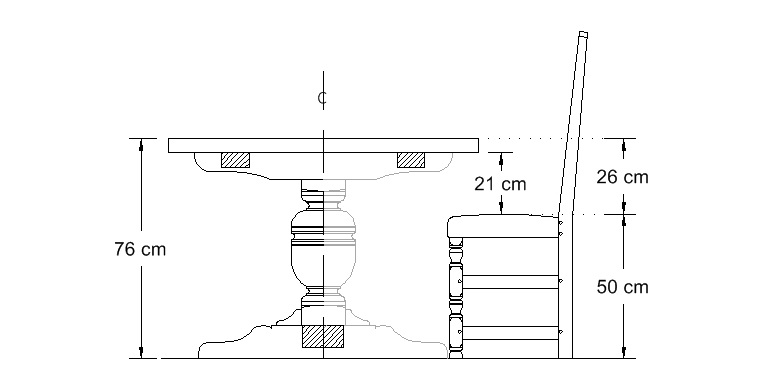
Dimensions of an ordinary table chair
Now that we've seen what comfortable means, let's take a look at the dimensions of a chair we use to sit at the table. And since it came to the table you should know that it can't be just any table either. The height, the space a person needs to avoid disturbing and being disturbed by the person next to them, the length, the width are standard dimensions that we have to take into account when ordering a table. We have talked about them on other occasions, but much better said by Călin from Solid oak, in the March 2018 issue of Wood Magazine (still to come). you can subscribe for 2018 and receive the March and September issues).
Sitting should be at a height of 46-52 cm from the ground. The perfect shape is slightly trapezoidal, with the broad side facing forward. The gap between the two parallel sides is 5-8 cm (2,5-4 cm on each side). This shape leaves enough room for the legs and allows the elbows to sit naturally on the arms of the chair. The width of the seat is between 40 and 52 cm and the depth between 38 and 46 cm. In order to avoid the sensation of sliding, it is customary, especially in the case of chairs without cushions (not upholstered), to incline the front seat backwards by 5-8º from the horizontal. This is not recommended for office chairs. In this case a straight seat facilitates the forward lean required for office activities.
Spăthe tar has a height of 40-52 cm for elegant chairs and 30-40 cm for ordinary chairs. In the case of the former, the rule that the backrest stops at the shoulder blade line is no longer respected. The inclination of the backrest in relation to the vertical is up to 5° for elegant chairs and up to 15° for relaxed, all-day chairs. However, as the angle increases, the seat angle must also be increased so that there is always a 90-100º angle between them. There should be a gap at the junction between the seat and backrest or, in the case of moulded seats, a curvature to give more space. This is necessary to have space when sitting and not to feel pressured in the lower back.
Arms The chair should be positioned in such a way that our arms rest naturally, without feeling our shoulders rise. This means they should be 18-23 cm from the seat, 20 cm long and 5 cm wide. The distance between them is approximately 48 cm.
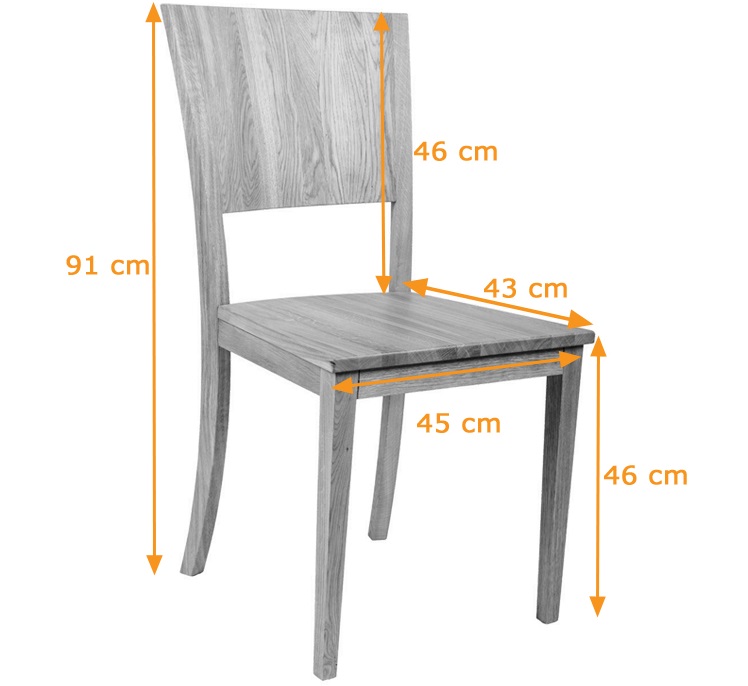
What type of wood should be used in the construction of chairs
The chair is a piece of furniture subject to very strong forces. It is not only to support people's weight but also to withstand countless sittings and stand-ups, to withstand different forces when the chair is left on its back or in front with only 2 feet on the ground. These are all tests that a prototype chair must pass before it can go into production.
That's why hard, durable wood is used for chairs. The wood we use most is fag being also very good for manufacturing curved elements (steam bending or using high-frequency currents). However, chairs are also made from oak, frasinbut also of resinous.
Several types of wood can be used in the construction of a chair. However, care should be taken not to make high-tensile joints between hardwood and softwood, and the legs should always be made of hardwood. Softwood can be used for the arms or parts of the backrest that are less stressed.
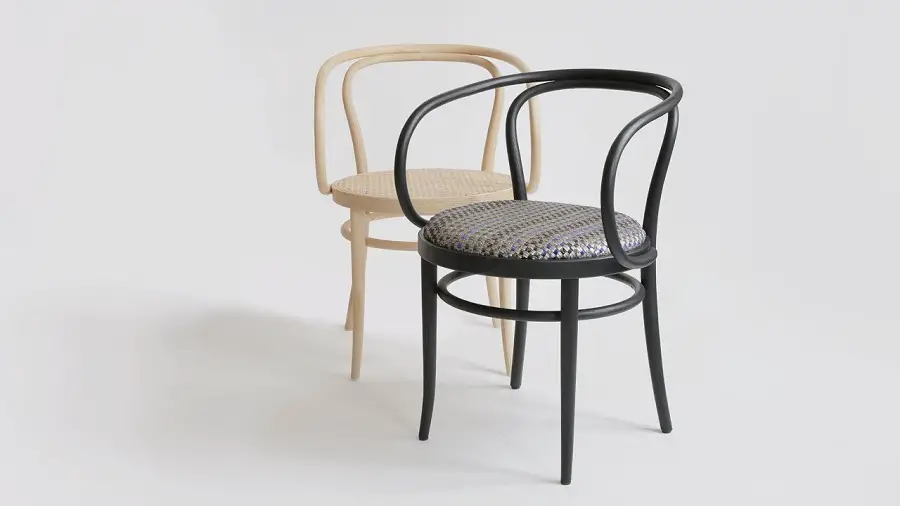
photo source: youtube.com
Different types of chairs
The above recommendations are for regular, table-top, adult chairs. But there are many other types of chairs, and for each of them there are standards and rules for making them.
Child seats
If for adults an average height is sufficient to determine seat sizes for generations, in the case of child seats things are no longer as simple. The child is growing and the seat needs to be adapted to his or her size. That's why an average height was chosen for each age group and the height of the seat compared to the ground was determined accordingly. The other dimensions were calculated proportionally to match the seat height.
- between 1 and 4 years the height of the seat is between 25 and 30 cm
- between 5 and 7 years the seat height is between 30 and 36 cm
- between 8 and 10 years the height of the seat is between 33 and 43 cm
- between 11 and 13 years the height of the seat is between 38 and 46 cm
There are also differences compared to armchairs, bar stools or rocking chairs. To give you an idea, I'll stop at bar stools, which look very similar to regular ones, the difference being the height.
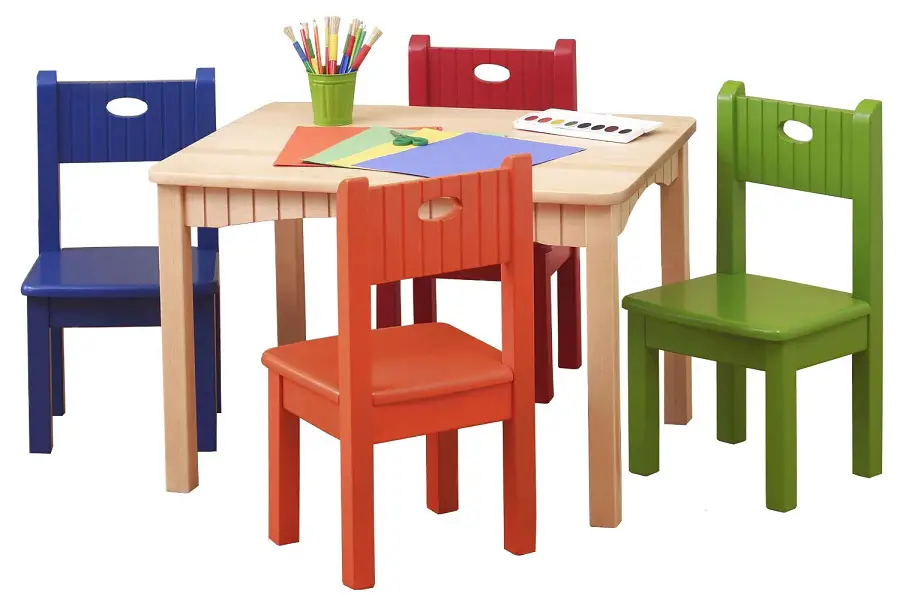
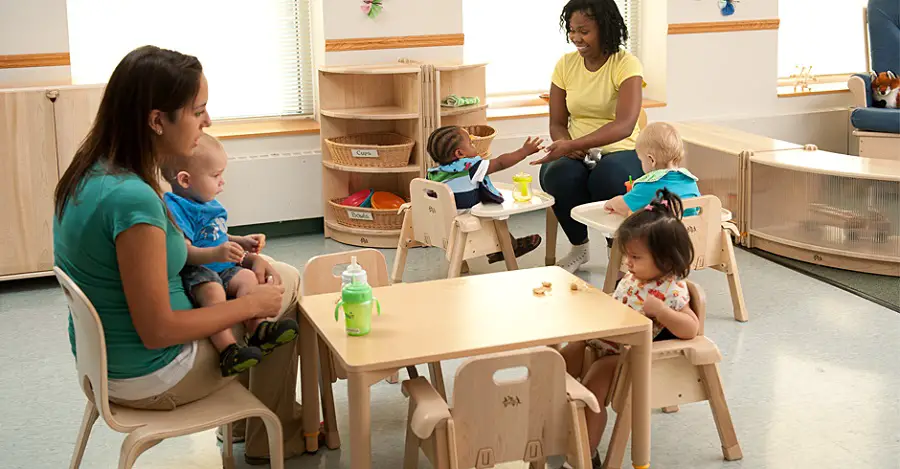
High bar stools
Bar stool should be chosen so that it is 25-38 cm below the bar counter. As the height of a bar is 100-115 cm, this gives a seat height above the floor of about 72-76 cm, which is considered standard for a bar stool. The height of the backrest is between 26 and 36 cm, the width of the seat between 38 and 46 cm and the depth between 30 and 40 cm. If the bar stool has a round seat, the diameter should be between 40 and 43 cm to make it as comfortable as possible. At 50 cm below the seat there should be wooden bars attached to the legs of the stool or a metal bar at the base of the bar so that the legs can rest comfortably.
This type of stool is not only used at the bar but also when there is a island used for breakfast or as a bar. Such islands are built with a height of 90 cm, the seats being lower than those for a bar (61 - 66 cm).
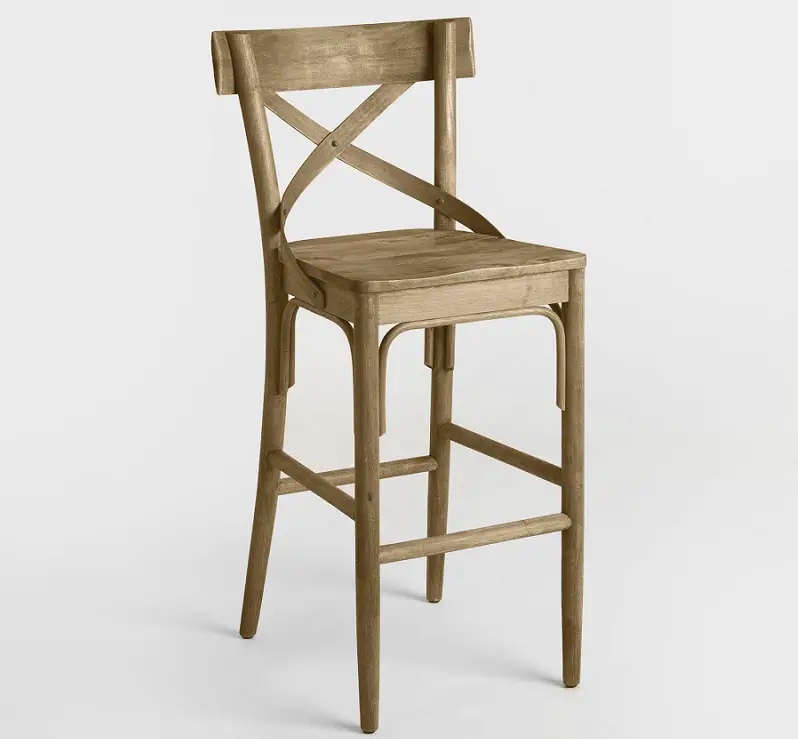
I hope you have managed to get an idea of what a comfy chair is and when you go to buy them it will be easy to make your choice. Good luck!


















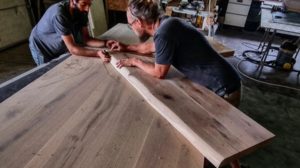




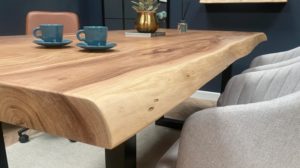
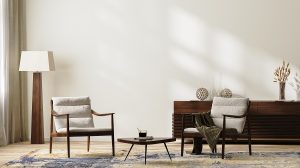

Add comment